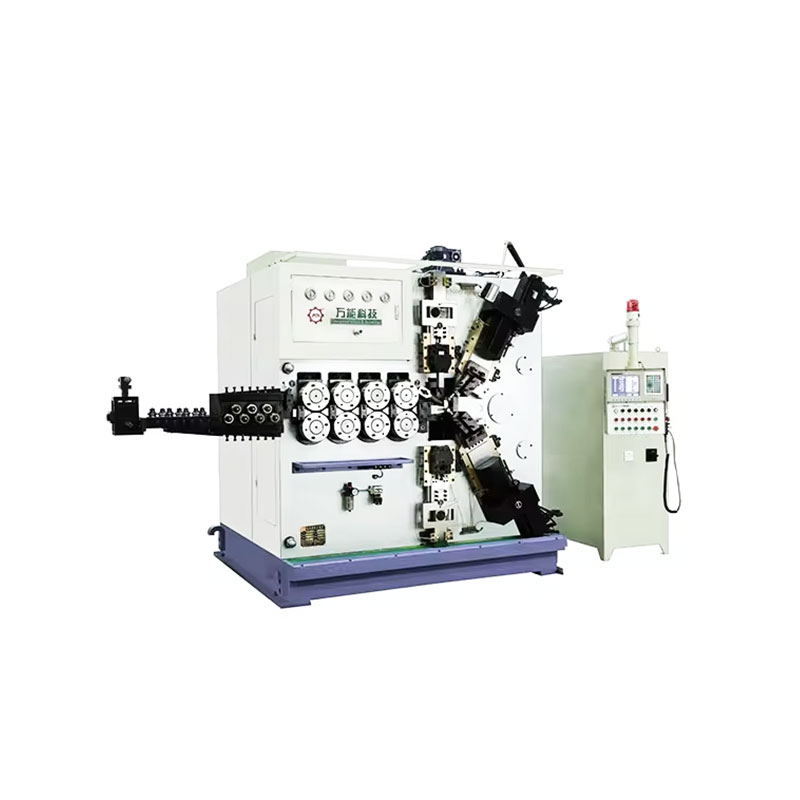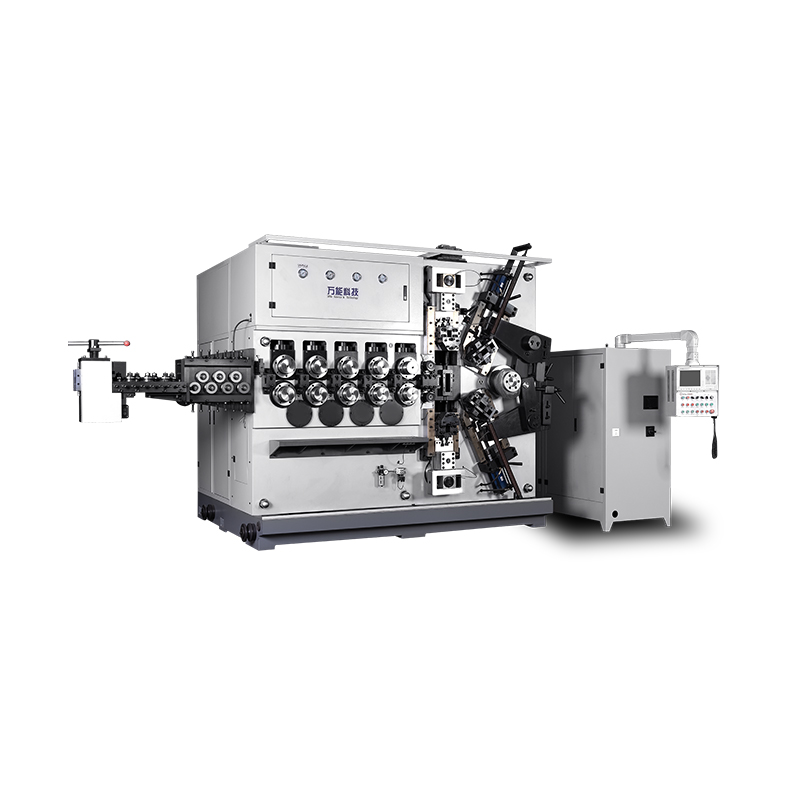Ensuring the continuous and reliable function of a
spring machine requires a combination of regular maintenance, monitoring, and a proactive approach to addressing issues as they arise. Here are steps to help you maintain the continuous function of a spring machine:
1.Read the User Manual:
Familiarize yourself with the machine's user manual and follow the manufacturer's guidelines for operation, maintenance, and troubleshooting.
2.Scheduled Maintenance:
Implement a regular maintenance schedule as recommended by the manufacturer. This may include tasks such as cleaning, lubrication, and inspection of critical components.
3.Inspect Components:
Regularly inspect all machine components for signs of wear, damage, or misalignment. Pay particular attention to springs, guides, sensors, motors, and control systems.
4.Lubrication:
If your machine requires lubrication, use the specified lubricants and follow the recommended lubrication intervals. Over-lubrication or using the wrong type of lubricant can lead to problems.
5.Tighten Fasteners:
Periodically check and tighten all fasteners, including bolts, screws, and nuts. Loose fasteners can cause vibrations and affect the machine's performance.
6.Clean the Machine:
Keep the machine clean and free from debris, dust, and metal shavings. Use appropriate cleaning methods and materials to prevent contamination.
7.Cooling and Ventilation:
Ensure that any cooling systems (fans, heat sinks) are working correctly and that the machine is placed in a well-ventilated area. Overheating can lead to component failures.
8.Check Electrical Connections:
Inspect electrical connections for signs of corrosion, damage, or loose wires. Ensure all connections are secure.
9.Calibration and Alignment:
If applicable, periodically calibrate and align the machine's components to maintain precision and accuracy.
10.Record Keeping:
Maintain records of maintenance activities, inspections, and any issues encountered. This documentation can help identify trends and anticipate potential problems.
11.Training and Operator Competence:
Ensure that operators are properly trained to use the machine and follow safety protocols. Knowledgeable operators are better equipped to identify issues early.
12.Spare Parts Inventory:
Keep a stock of commonly used spare parts, such as fuses, sensors, and belts, to minimize downtime in case of component failures.
13.Regular Testing and Quality Control:
Perform routine tests and quality control checks on the springs produced by the machine to detect any deviations or defects.
14.Monitor Performance:
Continuously monitor the machine's performance for any signs of abnormal behavior, such as unusual noises, vibrations, or fluctuations in spring quality.
15.Address Issues Promptly:
When issues are detected, take prompt action to diagnose and resolve them. Waiting to address problems can lead to more extensive damage and longer downtime.
16.Professional Assistance:
If you encounter complex issues or are unsure about maintenance or repairs, seek assistance from qualified technicians or the machine's manufacturer.
17.Emergency Plans:
Have contingency plans in place for unexpected machine downtime, including backup equipment or alternative production methods.
By following these steps and staying proactive in your maintenance efforts, you can help ensure the continuous function of your spring machine, reduce the risk of unexpected breakdowns, and maintain high-quality production output.







